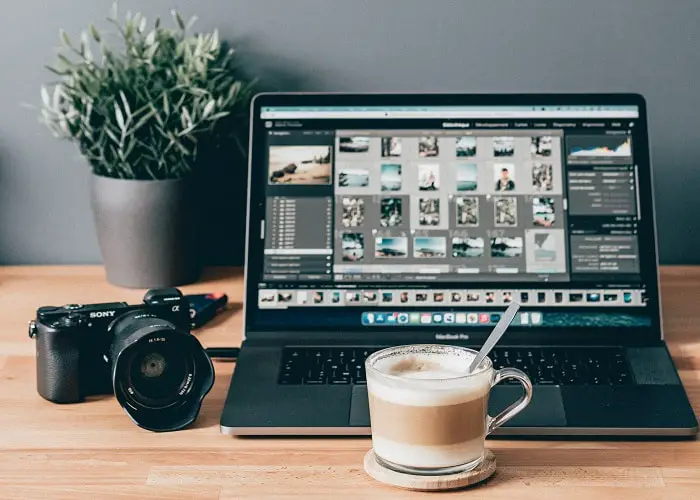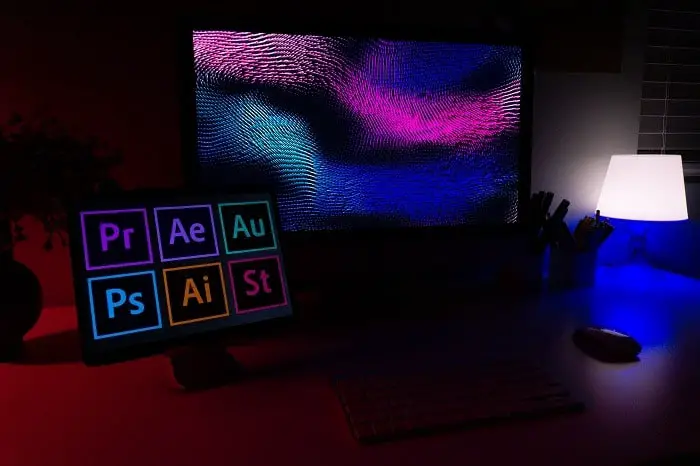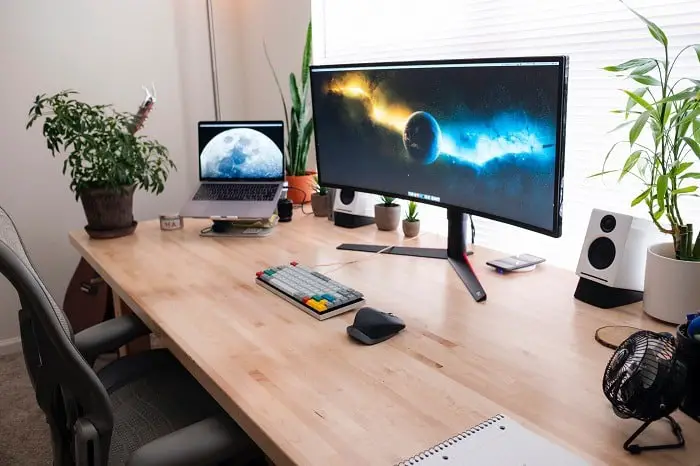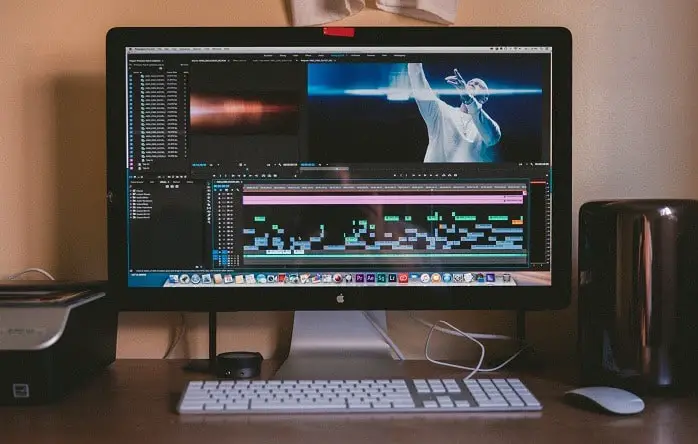All gamers know the usefulness of gaming monitors; they are explicitly designed to adapt to high graphics games perfectly. In reality, several manufacturers claim that their gadgets are capable of both gaming and picture editing. So, the common question comes up can a gaming monitor be used for photo editing?
Yes, gaming monitors can be used for photo editing. Gaming displays are just as simple to use for picture editing as the rest. It just depends on how you put them up. For photo editing, you need a display that is both high-quality and multifunctional so that it can be utilized for a variety of professional tasks, and a gaming monitor accomplishes just that.
So, if you are looking to edit photos on your gaming monitor, keep on reading this guide as we will discuss everything that you need to know regarding photo editing on a gaming monitor.
Can You Edit Photos on a Gaming Monitor?
Gaming monitors are designed to make fast-moving visuals with fine detail look smooth. Displays are designed to have a high refresh rate, such as 144 Hz or 240 Hz, as well as a low reaction time.
Gaming monitors almost often use a twisted nematic (TN) screen, which is fantastic for quick performance but has color accuracy and viewing angle limits. In-plane switching (IPS) panel technology provides color fidelity at broader viewing angles in picture editing displays.
PS was created mainly to alleviate the limitations of TN panels. IPS technology was developed in multiple versions by display makers, even while displays explicitly designed for picture editing have higher color accuracy compared to gaming monitors.
Yet, gaming monitors nevertheless perform very well when it comes to photo editing, with a minor difference compared to specialized photo editing monitors.

Different Aspects of Photo Editing in Gaming Monitors
While you may be familiar with specific monitor phrases, many others may be unfamiliar to you. There are a few things that picture editors should be aware of, which we will go over in more detail below.
sRGB and Adobe RGB
Adobe RGB color spaces, you will be able to identify displays at picture editors. Most displays allow you to use any color space. Colors and saturation may be adjusted more precisely with Adobe RGB, which is very useful if you intend to print your work.
On the other hand, if you employ the sRGB color space, your process will be streamlined. It is the color space used by digital devices by default. It is suggested to utilize sRGB as Adobe RGB on only one display unless your complete system supports Adobe RGB.
Gamma Correction
The gamma value of a photo indicates how vivid it appears on a screen. You may change the statistical decoding of luminance into a number for every pixel by altering it. The brightness of a photo on the screen is affected by gamma adjustment.
Monitor Panels
LCD panels are most often made of TN, VA, and IPS. Each panel has unique qualities that make it an ideal technology for a particular purpose. However, only IPS panels are suited for professional picture processing.
As a consequence, IPS displays deliver the color accuracy required by photo editors when altering images, and this accuracy does not fluctuate dramatically with viewing angle.
Screen Size
You do not need a huge screen size for photo editing. Many editors prefer a 27-inch display, whilst others prefer a 32-inch monitor. A bigger screen will enhance the quality of your gaming experience as well as your editing efficiency.
Viewing angle
The viewing angle of a display is an often neglected but critical feature. You may believe that you will spend the entire day gazing at your pc monitor. Keeping note of how often you move during the course of your working day will demonstrate that this is not the case.
If you change the angle from which you see a photograph, you will experience it differently. Matte displays are better for picture editing than glossy monitors because they do not refract light, but glossy monitors can reflect light.
Resolution
Resolution is pretty important for editing photos. You will need a high-resolution monitor to edit perfect-quality photos. So, it is preferred that you either opt for a 4k or a 2k monitor for photo editing.
Delta E value
Delta E explains the difference in perception between two hues, both physically and aesthetically. In the monitor specs, this number spans from 0 to 100. The human brain is incapable of seeing numbers less than zero. On the color wheel, 100 symbolizes the absolute reverse hue.
Delta E values are always mentioned in the specs of displays specifically built for picture editors. This number defines how correctly a monitor can display a certain color by utilizing the color’s “perfect” value. Photo editors often utilize Delta E1 and Delta E2 monitors.
Calibration
Calibration is necessary to produce perfect edited photos. Calibration of a display entails just adjusting the brightness and brightness of the display. To make this procedure easier, use a monitor that comes with calibration tools.
HDR
HDR-capable monitors are required for gamers and editors. This technique improves a video by enhancing the contrast and color spectrum, resulting in a more realistic image. It is suggested that photo editing displays have a peak brightness of 1000 cd/m2.

Can gaming monitors be used for graphic design?
Yes, gaming displays may be beneficial to graphic design. All you have to do is make sure you choose a monitor that is focused on performance and productivity and visual quality.
The main thing for a graphics design monitor is that the number of colors that a monitor can display on spectra is directly proportional to its color accuracy.
Numerous color spaces contain a broad spectrum of colors to deliver a large number of them to improve color accuracy and make images true to color. The Adobe RGB color space is a comparable color system that is utilized in graphic designer monitors.
Another important requirement for graphics design is an IPS panel. The IPS panels are in-plane switching (IPS) panels, and their primary function is to provide color fidelity at viewing angles that are broader than typical. The IPS panels used the plane to line switching, which decreased production costs and allowed screens to have a sharper screen with greater color reproduction.
Having said that, most contemporary gaming monitors are now equipped with IPS screens due to decreased production costs and improved image quality. As a result, they are more than enough for graphics design.
Do you need a 4K monitor for photo editing?
A 4k monitor is not required for picture editing, but it will help you see subtleties while zooming out or give additional screen area. If you only have room for a screen smaller than 27″, a 4k resolution will make text and icons too tiny to see, and it is best to invest your money on panels that support a broader spectrum of colors.
If you desire a monitor larger than 27″, the minimum resolution is 2k, often known as 1440p or 2560 1440. This strikes a decent mix between providing more screen space and visual detail while keeping text and icons from becoming too tiny to read.
Choose a Full HD (1920 x 1080) monitor that is larger than 27″ because the image will be less detailed and of lower quality, not to forget the restricted display area.

Is a curved monitor good for photo editing?
One of the most significant advantages of curved displays for picture editing is immersive viewing. The term “immersive watching” refers to a monitor’s view being more similar to real-life vision than a flat-screen monitor.
Because it matches how you see it in real life, a curved monitor helps you feel like you’re a part of the situation. We perceive in 3D, not 2D. Therefore a curved monitor will provide a more accurate representation of a real-world picture.
Curved displays, which are designed with the human eye in mind, broaden the field of view by bending the screen’s borders toward the observer, bringing the picture into peripheral vision.
As a result curved display allows less eye strain, allowing you to work for longer periods of time without needing to take a break. Their curved borders help lessen visual distortion, making it simpler to judge the effect of your modifications.
Is gaming monitors’ color accurate?
Gaming monitors employ TN panels, where “TN” refers to how the liquid crystal travels within the display, which is incredibly quick, but the colors shift when seen from an angle. As a result, color accuracy in gaming monitors is not as accurate as it is in professional graphics design displays since gamers do not demand 100 percent color accuracy.
Does monitor matter for video editing?
Professional video editors understand that it takes more than the greatest video editing software or video editing applications and a strong PC to see through even the most basic video editing operations.
The more professional you want your work to appear, the pickier you should be about the monitor you use. To begin, a minimum color gamut of 95 percent DCI-P3 and color reproduction of delta E 2 are required.
Dynamic range is also an important consideration. If you shoot in HDR, you’ll want a brighter display with improved contrast as well as HDR capability.
Furthermore, most media produced nowadays is in greater resolution, so having something that can show the resolutions you want is also an issue to consider.
Additionally, having one with a higher resolution, such as 4K, involves numerous programs, windows, and editing tools on the same display together. As a result, having a decent monitor for video editing is essential.
What size monitor is best for video editing?
A video editing display should be large enough to give a comfortable viewing area for the sophisticated user interface of non-linear video editor apps during extended work sessions. A size range of 27 to 32 inches is a decent, comfortable size range. Ultra-wide screens with a 16:9 screen ratio are better suited for video editing and are often available in sizes larger than 34″.
Conclusion
Can a gaming monitor be used for photo editing? The simple answer is yes, it is possible. However, photo and video editing monitors have certain specifications which are important parameters for photo editing.
Hence, today in this guide, we discussed everything you need to know regarding photo editing on gaming monitors. So, make sure to read this guide properly before getting a gaming monitor for editing.

Hello Good People! This is Pavel and Welcome to PC Delight!
I’m an Electronics Engineer by profession with a passion for Gaming & PC builds. When I came up with the idea for PC Delight, it was my goal to share & offer the very best PC building ideas to tech-loving people like myself.
Since my school days, I’ve been just addicted to gaming & PCs. That leads me to experiment with various ways around the very niche, resulting in great productivity. And I’m here to share those practical experiences. So that next time you start some experiment with your PC builds or struggle to cope with a certain game, I’m here with the solutions. With these philosophies, I started my journey in 2017 and just kept going.
